Ever wonder what makes one blog popular and another flop?Or why one blog builds a solid readership, while another struggles to find an audience?There's no doubt about it.Starting a business blog isn't easy. But growing one? That's even harder.From content to promotion, growing your blog and making it profitable takes time.But here's the good news.If you've wondered how to grow your blog without a big budget or marketing team, there is a way!And I've proven this time and again.Today I'm sharing some simple building blocks.Read on to learn four steps you can immediately take to grow your blog the right way.
How to Grow Your Blog (the Right Way)
1. Create Strategic (and well-defined) Blog Goals
If I asked you why you want to start a blog, would you know the answer?Can you articulate what your blog will do to support business goals?If not, don't start a blog.If you already have a blog, stop writing immediately. Sound harsh? Consider this.Blogging without a plan is as useful as cleaning the house with a party going on. Oh sure, you might gain a little traction, but you'll end up backtracking, and eventually starting all over.If you started your blog with a loosely defined plan, then what you have is an erratic content strategy at best.Without clarity in direction, mission and strategic goals, you'll limp along.Want to create your blogging goals? Start with this goal setting worksheet.[clickToTweet tweet="Map your #socialmedia success! Grab this 10 step worksheet to Make Your Social Media Goals Stick." quote="Map Your Social Media Success! Grab this 10 step worksheet to Make Your Social Media Goals Stick."]Important Blog Questions to Answer
- What is the number one reason you want to blog?
- What will a blog do for your business or what has it done so far? Look down the road - 3, 6, 9 months.
- Who will read your blog? Be specific about your reader and potential customer. (we'll tackle this in depth below)
- How will you stay consistent? Who will help you achieve your blogging goals?
- How does a blog support your current marketing efforts? (this is a biggie - don't overlook what role it plays in your overall marketing plan)
- What’s your writing style? Are you serious, straightforward, funny, data driven, silly, witty?
- What will your marketing funnel look like? e.g. How will your blog create business opportunities and drive sales?
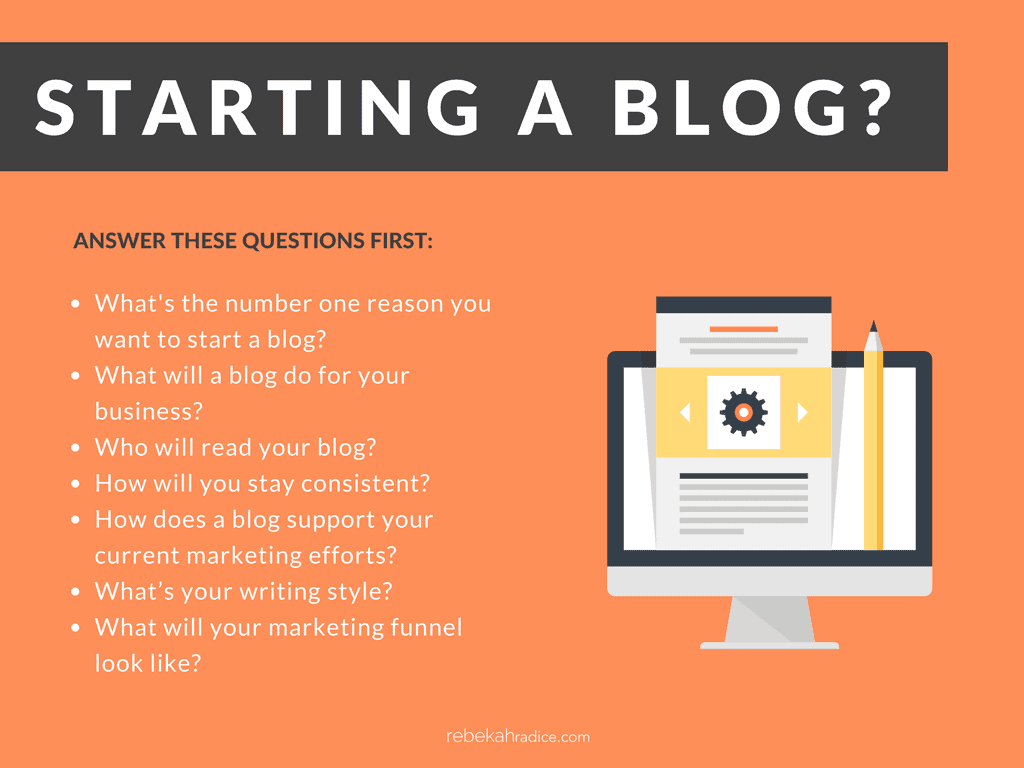
It’s a noisy online world with millions of blogs authored every day. If you want to stand out, you need to get strategic.Commit to SMART goals. Goals that push you towards something tangible, concrete and trackable.
- Specific Have you been specific in what you want to achieve?
- Measurable How will you know if you’ve achieved your goal?
- Achievable Is this a goal that you can achieve?
- Relevant Is this goal aligned with your mission, vision and values?
- Time Specific When do you want to achieve this goal by?
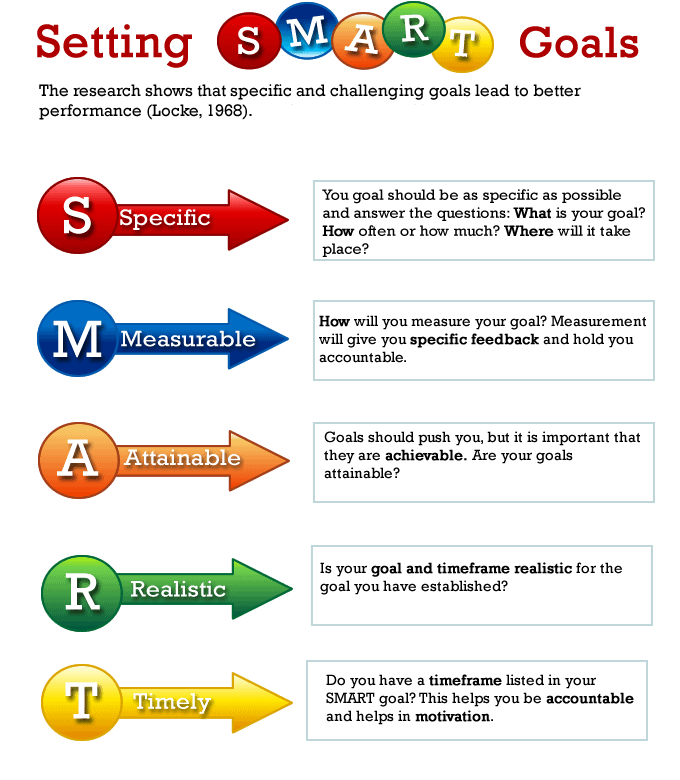
No matter what industry you're in, one thing is certain. Content is a constant and gaining customer attention is at a premium.Make yours stand out through defined blog goals backed by an actionable plan.[clickToTweet tweet="Your blog content can stand out through defined goals and an actionable plan. Set yours today!" quote="Your blog content can stand out through defined goals and an actionable plan. Set yours today!"]
2. Write Audience Specific Content
There's a whole lot more to blogging than writing. Don't believe me? Just ask any successful blogger what the key to their success is.What drives blog traffic, leads and conversions?The answer is simple. They know who their market is, what they need and how to solve their problem(s). Then they produce content with that audience in mind.Just like those bloggers, you have an ideal blog audience. They’re уоur customers, prospective buyers or users. Do you know them inside out?If you want to run a successful blog, you must create content for your ideal reader. That makes research a must.So, where do you begin?First, get crystal clear on your specific market. List their qualities, demographics, skills and any other important information.Here's what that might look like:Persona Description (example)
- Female
- Average age: 44
- 3 people in the household - have to assume older child (no small children running around)
- Self-employed, small business, or entrepreneur
- Income - $75k
Persona ResourcesThese details can come from many sources:
- Google Analytics
- Customer Surveys
- Customer Interviews
Creating a persona can help you better focus on your core reader and customer. Not sure how to get started? Use this Persona Template from HubSpot.
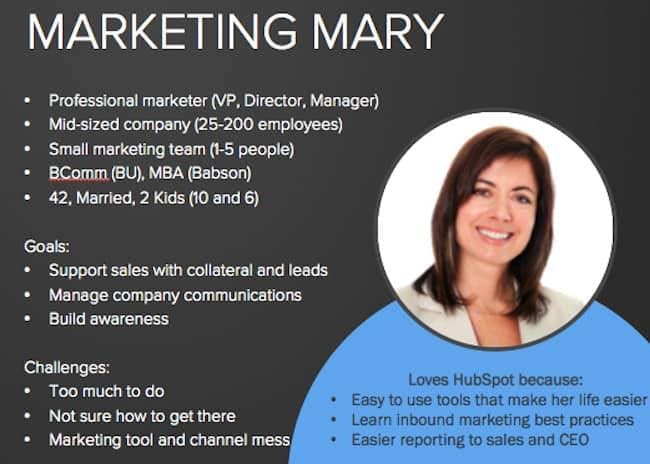
Solve The ProblemYour next step is to write down the top 5-10 problems you solve for your reader/customer.For example, if you're a productivity coach, you might help business owners:
- Work smarter
- Overcome procrastination
- Put systems in place to combat overwhelm
- Identify counter-productive habits
- Balance life and business daily tasks to get more done
Or you might be a local daycare provider. Your blog addresses the challenges all parents of small children face. You talk about teething, potty training, sleeping through the night, and how to get them to eat their peas and carrots. Or at least that's what I remember from those days many years ago.Now think about it. Those issues are very different from ones faced by parents of teenagers. What you write about, the topics you tackle and how you position your content - should all have this audience in mind.[clickToTweet tweet="Your blog topics and the content you write must have a specific audience in mind. Here's how!" quote="Your blog topics and the content you write must have a specific audience in mind. Here's how!"]Not 100% sure who your market is? Start here.How to Define Your Target Market (answer these questions)
- Who are you passionate about serving?
- What differentiates you from the competition?
- Who is your specific target market?
- What qualities or characteristics define them?
- What’s important to them?
- What problems can you solve?
Being clear about your exact market will allow you to tailor your content and your message in a specific way.Do Your Due DiligenceYour next step is research. You're going to research the topics you listed above. Each one will become topics within your blog, allowing you speak to that challenge.Now this is where it gets really fun. You're going to turn to Google to search for terms around the problems you solve.You'll search based on the words/phrases your potential readers, users and buyers would actually type or say. What are they asking Google, Siri or any other search engine when looking for your product or service? In other words, what is the intention behind their need?Probably not going to be "work smarter." Instead they might ask, "what are the top productivity tips for business professionals?See how conversational that is? Not the traditional SEO tactics we once knew. Those tactics have made a radical shift. The days of "tricking" search engines with keyword placement and stuffing are long gone.Today, it's all about user intent, the value of your content and writing for the reader. And not just any reader. Writing for the reader you want, the one you've outlined in detail.As Marc Ensign puts it,
"You must do extensive "people" research. Instead of looking for the “right” keywords, we are looking for the “right” visitors. Our ideal clients. The ones that can move the needle for us. And once we know who they are, we can better understand what they need, how they search and what they expect when they land on our website. We don’t care about traffic. We care about the right traffic."
This is something we work on daily at Post Planner. Here's how our Editor in Chief, Diana Adams explains it:
For the best results, think about what kind of content would be most valuable to your audience. In other words, what is their intent? Why did they come to your blog? What kind of info are they hoping to see from you?
The best way to answer these questions is to really know your audience (your customers and potential customers). What are the struggles they face? What problems do they need solved?
Once you can figure out how to answer these questions better than anyone else in your niche, your traffic and subscribers will go up up up (and fast)!!

Now it's time to get writing. Create a spreadsheet like the one we use above to define the exact struggle and intent of your reader. Get into the details first and the writing will be a breeze![clickToTweet tweet="Writing today is about user intent, the value of your content and writing for the right reader. " quote="Writing today is about user intent, the value of your content and writing for the right reader. "]
3. Make a Consistent Blog Schedule (and management system)
When was the last time you went back to a blog that hadn’t been updated in months? Probably never.Staying consistent with your blogging efforts is the only way to establish your reputation and build blog credibility. After all, how can anyone take you seriously if you don’t take your blog seriously?Whether you use Google Calendar, Handle (my personal fave), or another reminder system - pick yours and stick with it.And don't get caught up in creating an elaborate content calendar. It’s as easy as picking the days you’ll write, identifying your topics and then sticking with a plan.As CoSchedule says,
The more time you spend strategizing, the less time you spend creating real content that will influence sales (which, let’s face it, is the entire reason to plan your marketing calendar).
Amen to that. Stop agonizing over the details and instead focus on what you can commit to.Can you blog once a week, twice or even three times? Think seriously about how often you can create and publish new content.Begin with at last one post per week and keep the day you publish consistent. You want to train your readers when to look for your content. Certainly this can and will change as your blogging continues, but for now, just focus on one consistent day.>>GET YOUR FREE SOCIAL MEDIA EDITORIAL CALENDAR<<Peg Fitzpatrick offers this advice,
"Once you have your editorial calendar created, you’ll find that creating more content is easier because you know just what’s coming up next. This takes some of the pressure off of creating blog content and still allows you the freedom to move articles around in the schedule or work ahead in any order that you see fit."
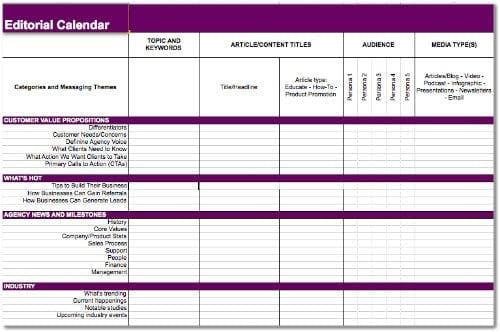
Remember: always put the quality of your work ahead of the quantity you produce. Only posting one quality post per week is far better than alienating your blog audience.And poorly written articles that are thrown up on your blog hastily will hurt you in more ways than one.Not sure what to add to your blog calendar? Answer these questions to add content (along with the intent above) to your schedule.
- What makes your business unique? What do you love about it that your blog audience will appreciate and respond to in kind?
- What questions do current clients and customers ask over and over? If one person asks, more will want the answer. Create a running list of top questions you can answer.
- What do past customers have to say about your business? Use testimonials to add to your blog to help others understand how you help.
- What makes you passionate about your business? Write down why you love to help your community and then share that within your blog.
4. Put Together a Blog Promotional Strategy
Hitting publish on your latest blog post is not your final step. In fact, it's only the beginning.If you want to get the word out and encourage blog growth, you must promote, promote, promote.That means getting your content in front of the right people. People who will take action on the content you share.That's where an email list, traditional marketing and a social media promotional strategy come in.
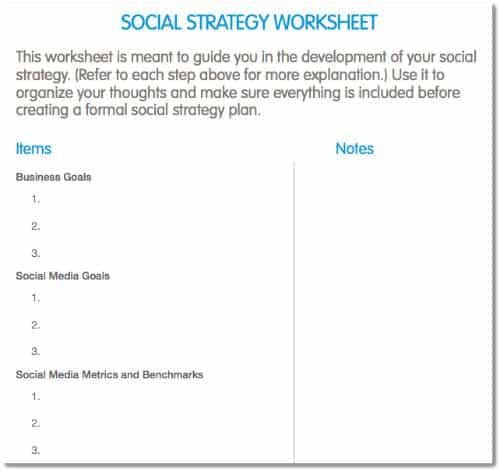
A blog audience isn’t going to miraculously show up at your doorstep. To get your blog noticed (and build a popular blog that keeps people coming back), you need to tell people where to find you.Start with traditional marketing. Add a link to your email signature, newsletter and other promotional items. If you're a Gmail user, a great option is Wisestamp.
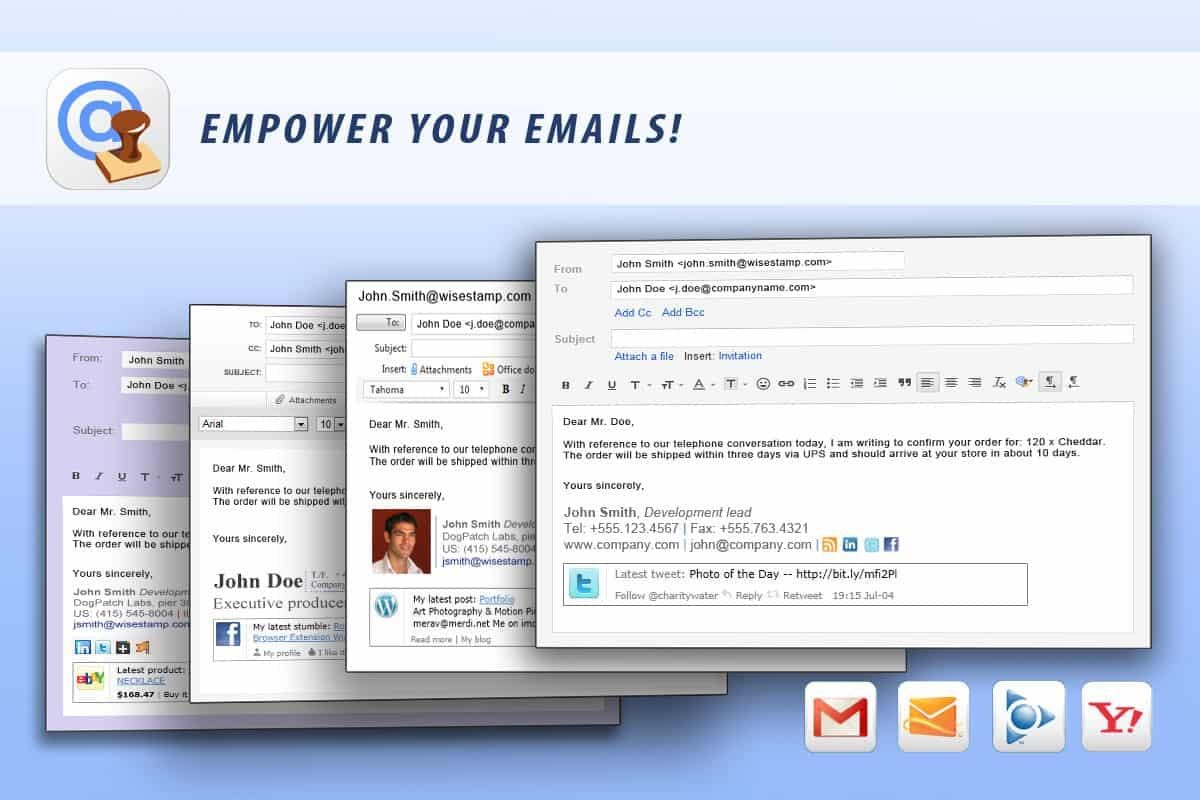
Now build an email list. One of the biggest mistakes many bloggers make is creating a healthy list. Get Response offers these tips to build an email list...fast.
- Don’t buy email lists. Unless the vendor is highly reputable, purchasing an email list is worse than a waste of time. You could end up having your company listed as a spammer.
- Start with current clients, business partners and followers. You already have them in your contact directory. Many email management services have tools to let you easily move them from your contact book and email history to your email-marketing list.
- Leverage membership lists. Many chambers of commerce and professional organizations provide contact lists as a membership benefit. This is great for B2B market, but only when used intelligently.
- Ask online. Use multiple online locations to host your sign-up form: website, social media profiles, blog, online ad, infographic, whitepaper download, squeeze page, ecommerce checkout, and more.
- Ask offline. Use sign-in sheets at stores, events and shows; collect business cards; use QR codes or an SMS signup service.
- Use incentives to encourage sign-ups. Offer free stuff that is relevant and matches your brand and industry: exclusive webinars, industry reports, eBooks, how-to videos, and special offers.
If you want to get the word out and grow your blog, building a list is a great way to do it. Write amazing content that goes out to just your email subscribers. Get them excited and involved in your marketing efforts.Next, leverage social media. Share your post across all of your social channels, including Facebook, Twitter, Google Plus and even visual networks like Pinterest and Instagram.There’s a whole new audience waiting to find you, so let them!
Final Thoughts
No matter if you’re looking to gain new leads or improve online awareness, the benefits of growing a thriving business blog can be far-reaching.If you want to succeed, make the commitment today to stay consistent with your blogging efforts.No blog succeeds overnight. It will take time and perseverance.But in the end, the results are what make the difference. Take the plunge, enjoy the ride and have fun growing your blog!
About Rebekah Radice
Rebekah Radice, co-founder of BRIL.LA, has traded narcissism for purpose. When not driving growth, you'll find her tricking family into thinking she's Emeril Lagasse - likely covered in marinara. The spotlight was fun, but impact is better. These days she's using 20+ years of brand brilliance for good.
